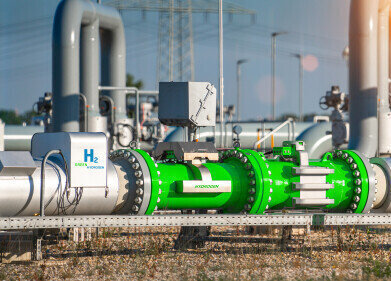Biofuel industry news
Condition Monitoring Applications - Energy
Dec 27 2021
The energy sector is heavily reliant on machinery and moving parts, making condition monitoring (CM) fundamental to maximising efficiency and minimising downtime. The field uses sophisticated instruments, sensors and software to monitor different parameters and determine the condition of machines. Data is used to detect developing faults and schedule maintenance when necessary.
In the energy sector, condition monitoring is an important component of any predictive maintenance strategy. Below, we explore some of the main applications for CM in the energy sector, focussing on both non-renewable and renewable energy.
Boosting profits in a volatile oil market
Even before the COVID-19 pandemic, low oil prices were a major concern for the oil and gas industry. Market volatility underscores the importance of maximising operational efficiency, maintaining aging assets and minimising unplanned downtime.
On average, unplanned downtime costs offshore oil and gas organisations US$49 million a year. In some cases, this figure can climb to more than US$88 million. Condition monitoring allows operators to track the performance of machinery and equipment in real-time. Monitoring parameters like vibration and temperature helps operators identify mechanical irregularities and schedule repairs before an issue escalates. As well as reducing downtime, this helps to save money on maintenance costs and extend the lifespan of equipment.
Maximising renewable energy output
From the sprawling offshore wind farms being installed off the coast of Australia to the enormous solar farms planned for Californian deserts, green energy is set to power the future. Like the fossil fuels sector, wind and solar energy infrastructure is heavily reliant on machinery and moving parts.
For example, wind turbines are made up of multiple components, including rotor blades, inverters and drivetrains. All work together to transform wind into electrical energy. Tracking the condition and performance of these moving parts allows operators to maximise Annual Energy Production (AEP), which describes the total amount of electrical energy produced by a turbine in a year.
Monitoring hydropower infrastructure
Over the past few decades, condition monitoring has emerged as an invaluable tool for hydropower plants. The transition from continuous base load operation to partial and periodic load operation has improved cost efficiency but increased the strain on generation units due to more frequent stopping and starting. This has increased the risk of mechanical failure and made condition monitoring a critical part of maintaining infrastructure, minimising downtime and avoiding catastrophic failure.
Developed for aviation jet fuels, Ball-on-Cylinder Lubricity Evaluator (BOCLE) technology is used to measure the oxidative wear impact of fuels and additives. Find out more about the technique and its condition monitoring applications in ‘An innovative instrument to test lubricity in fuels: Ball-on-Cylinder Lubricity Evaluator (BOCLE).’
Digital Edition
PIN 26.1 Feb/Mar 2025
March 2025
Analytical Instrumentation - Elemental Analysis for Quality and Process Control at Refineries, for Lubricants and Wear Metals in Engine Oils - Synthetic Lubricants: New Developments - Scaling...
View all digital editions
Events
Apr 14 2025 Moscow, Russia
Apr 15 2025 Moscow, Russia
Apr 22 2025 Hammamet, Tunisia
Apr 22 2025 Kintex, South Korea
Solar & Energy Storage Summit 2025
Apr 23 2025 Denver, CO, USA



















